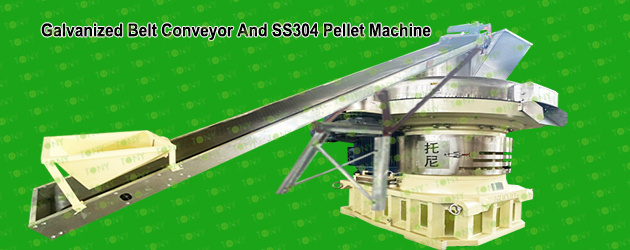During the operation of the wood pellet machine, the control of the feed speed can be called the "central nervous system" - it is directly related to the molding state of the material in the pelletizing chamber, the energy consumption of the equipment, the quality of the pellets and the stability of operation. Too fast or too slow feed speed may trigger a chain reaction, resulting in a sharp drop in production efficiency and a surge in costs. Therefore, accurate control of the feed speed is the core prerequisite for achieving efficient, stable and low-consumption operation of the wood pellet machine.
1. Uncontrolled feed speed: the "invisible killer" of pelletizing production
The feed speed needs to form a dynamic balance with the ring die speed, roller pressure, and material properties (water content, particle size) of the pellet machine. Once the balance is lost, it will cause multiple problems:
The harm of feeding too fast:
The material accumulates excessively in the pelletizing chamber, exceeding the extrusion processing capacity of the ring die and roller, resulting in blockage, suffocation, and even burning of the motor due to excessive load; at the same time, the material is unevenly stressed, and the particles are prone to "hollow" and "cracks", the molding density is insufficient, and the crushing rate soars (up to 15% or more); in addition, excessive material will aggravate the friction between the roller and the ring die, the mold wear rate will accelerate by 30%-50%, and the equipment maintenance cost will increase significantly.
The hazards of slow feeding:
The material filling in the pelletizing chamber is insufficient, the "idle" ratio of the roller and the ring die increases, and the unit energy consumption increases sharply (the power consumption per hour can increase by 20%-30%); at the same time, the material is squeezed in the chamber for too long, which is easy to cause excessive temperature due to excessive friction, causing lignin denaturation or particle burning, affecting product quality.

2. "Technical realization" of precise control: from mechanical to intelligent
The modern wood pellet machine has formed a multi-level feeding control system, from basic mechanical adjustment to intelligent closed-loop control, to meet the needs of different production scenarios:
Mechanical speed regulation: through pulley speed change, gearbox adjustment or manual throttle valve, set a fixed feeding speed, suitable for small-scale and material stable production scenarios, low cost but poor flexibility.
Frequency conversion speed regulation: The feed motor speed is controlled by the frequency converter to achieve 0-50Hz stepless speed regulation, which can be adjusted in real time according to the operator's experience (such as observing the appearance of the particles and listening to the sound of the equipment running), with fast response speed and suitable for medium-scale production lines.
Intelligent closed-loop control: high-end equipment integrates sensors (current sensor, pressure sensor, temperature sensor) and PLC control system to monitor the pressure in the ring die cavity, motor load and pellet discharge temperature in real time, and automatically adjust the feed motor speed:
When the motor current exceeds the standard (indicating excessive load), the feed speed is automatically reduced;
When the pressure is insufficient (indicating too little material), the feed speed is automatically increased;
When the temperature is too high (indicating excessive friction), the speed is dynamically fine-tuned to balance heat dissipation and molding efficiency.
The feed speed control of the wood pellet machine is essentially the dynamic balance art of "material supply" and "equipment processing capacity". It is not only the "stabilizing force" to ensure the quality of pellets, but also the "throttle valve" to reduce production costs, and it is also the core technical fulcrum for achieving large-scale and standardized production. In the industrial production of biomass pellets, the precise control of the feed speed has become a key indicator to measure whether a production line has high efficiency and high quality.





















